-
-
Access Free Student Software
Ansys empowers the next generation of engineers
Students get free access to world-class simulation software.
-
Connect with Ansys Now!
Design your future
Connect with Ansys to explore how simulation can power your next breakthrough.
Countries & Regions
Free Trials
Products & Services
Learn
About
Back
Products & Services
Back
Learn
Ansys empowers the next generation of engineers
Students get free access to world-class simulation software.
Back
About
Design your future
Connect with Ansys to explore how simulation can power your next breakthrough.
Free Trials
ANSYS BLOG
May 24, 2023
University Students Train for Space Careers Using STK
Concerns over a shortage of skilled workers and engineers in the European aerospace industry date back at least a decade.1 Members of the European engineering community have proposed that greater strides should be taken at the academic level to better equip graduates and encourage more students to enter the field. Advocates contend that with technology advancing daily, skill sets must evolve and collaboration is needed to set up a bridge between educational institutes and the aerospace industry to increase talent and skills.2
To help mend such skills gaps, the European Space Agency (ESA) launched the ESA Academy in 2016 to enhance university students’ educational experience with practical and theoretical hands-on learning. Students are encouraged to explore various disciplines, including space sciences, engineering, space medicine, spacecraft operations, project and risk management, product and quality assurance, standardization, and more.
Since its inception, the Training and Learning Programme (TLP) — one of two main ESA Academy programs at the organization — integrates cutting-edge technology, including Ansys Systems Tool Kit (STK) digital mission engineering software, to complement students’ academic experiences and advance skill sets with industry-ready tools. The Academy accesses Ansys’ tools through the Ansys Academic Program, which provides universities and academic institutions with affordable software for use in the classroom and in research. To date, the ESA Academy has trained more than 2,000 students in space-related domains.
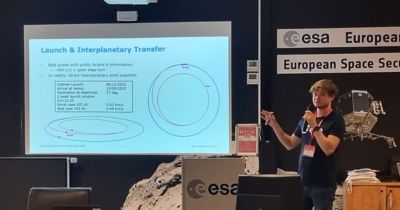
University students in the ESA Academy’s Training and Learning Programme (TLP), an education initiative managed by the European Space Agency (ESA), integrate Ansys Systems Tool Kit (STK) to explore space applications, including spacecraft trajectory analysis and orbit system design.
Applied Learning: Putting Space Design into Practice
The ESA Academy welcomes university students from ESA Member States, as well as Canada, Latvia, Lithuania, Slovenia, Slovakia, and other countries per ESA agreements. Programs are open to undergraduate- and graduate-level students, though the majority of students are at the graduate level pursuing master’s degrees.
The academy’s two main programs include Hands-on Space Projects — a continuing program that enables students to gain first-hand, end-to-end experience of space-related projects — and TLP, an initiative offering students a portfolio of different training sessions and learning opportunities.
The TLP offers approximately 20 training sessions every year in different fields of ESA expertise to complement what students learn at university and better prepare them for a career within the space sector.
Sessions are generally four or five days with longer training options offered during the summer. All sessions take place at the Training and Learning Facility (TLF) located within the ESA Education Training Centre at the ESA European Space Security and Education Centre (ESEC-Galaxia) in Belgium. The TLF houses a training room and an educational concurrent design facility.
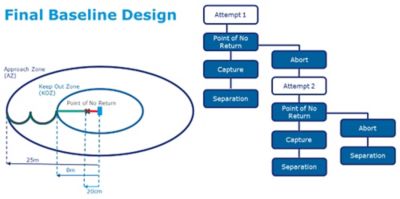
ESA Academy’s Concurrent Engineering Workshops challenge students to develop mission plans and designs using a concurrent engineering approach, which encourages students across teams to work collaboratively while completing different stages of design and development in unison rather than separately.
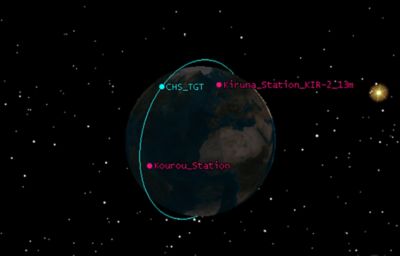
Students enrolled in ESA Academy programs get to explore space applications using real-life data from actual sites, including the Kiruna S-band station, which supports 18 satellites and includes many of the ESA's flagship missions.
So far this year, students in a four-day Concurrent Engineering Workshop in February developed a mission concept to demonstrate a technology that ESA is creating for capturing space debris. The students were guided by ESA systems engineers and used a variety of tools, including STK, to design a mission of two CubeSats. As defined by NASA, CubeSats are a class of research spacecraft called nanosatellites. One CubeSat operated as a “chaser,” which would approach, capture, and release a second CubeSat, or “target,” while in orbit. The mission aimed to prove that the technology can remove pieces of space debris in the future. Upcoming workshops in 2023 will also incorporate STK.
Concurrent engineering encourages students across teams to work collaboratively while completing different stages of design and development simultaneously rather than in sequence.
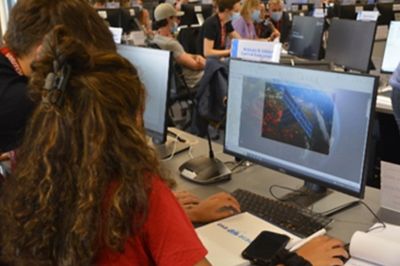
Since its inception in 2016, the TLP has trained more than 2,000 students in space-related domains using industry-ready tools, including Ansys STK.
Working Together, Concurrent Engineering
Last year, the program integrated STK into four Concurrent Engineering Workshops. Students were split into teams of two or three, each responsible for the design of a specific subsystem of a space mission. The aim of parallel efforts is to accelerate and enhance the discovery and development of mission architectures. Students used STK for spacecraft trajectory analysis, as well as orbit and communication system design.
Natacha Callens, administrator of the TLP, says STK assists concurrent engineering approaches to space design by providing a shared platform.
“In our concurrent engineering workshops, we have all different disciplines in the same room, and students work in a concurrent way using a collaborative system, in which any changes to a parameter in one subsystem is directly reflected in the others,” she says. “By using STK, the students can make these changes within the tool and see the impacts across the mission trajectory with visualization and collaboration.”
Last spring, university students from different ESA Member States and Canada were on-site at ESEC-Galaxia for a five-day concurrent engineering challenge, which was also attended remotely by students from two European universities with their own concurrent engineering facilities: École Polytechnique Fédérale de Lausanne (EPFL), also known as the Swiss Federal Institute of Technology Lausanne, and the University of Luxembourg.
Each student team was tasked with designing a mission to quantify the water ice resources preserved in the shadowy regions of the lunar poles. Students used STK and other tools to perform high-resolution mapping of the lunar surface through reflectometry between multiple spacecraft, which included a single spacecraft — a so-called “mothercraft” — and two CubeSats that were deployed by the mothercraft in lunar orbit.
“STK supports concurrent engineering workshops by enhancing the mission analysis iterations, thanks to its reliable features and add-ins such as orbit simulations — for example, access to ground stations and coverage analysis — and advanced trajectory simulations for both interplanetary and low Earth orbit (LEO) missions, spanning single satellite missions to constellations,” says Callens.
In another workshop in the fall, university students from ESA Member States and Malta were challenged to design a mission to Venus. With the support of ESA systems engineers, students used STK to explore how habitability may have evolved in the solar system. The mission consisted of a floating platform and a spacecraft — dubbed LOVE by the students for “large orbiter Venus explorer” — that could be propelled on a single Ariane 6.2 launch.
“In the frame of our activities, it is essential to use a tool such as Ansys STK,” says Callens. “Without it, we could not offer the same hands-on experience to our students."
Similarly, affordable access to the software through the Ansys Academic Program is equally needed.
“We are an education office, and with the budget allocated to our training activities, we would not be able to buy software licenses at the professional cost,” she says. “The Ansys Academic Program providing us with these tools directly contributes to the level of training that we can provide our students with.”
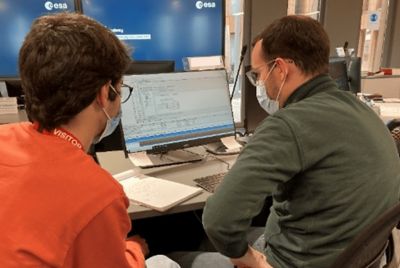
The ESA Academy prepares university students for careers in space by supplying them with training and practical experience.
Securing Tomorrow’s Engineering Industry
ESA Academy is committed to preparing university students for careers in the space sector by supplying them with theoretical lectures and hands-on exercises using advanced tools.
“We appreciate the opportunity to use Ansys STK in our training facility,” says Callens. “We really see the benefit of having this tool available for our students, especially in our concurrent engineering workshops where students in groups can use this tool collaboratively and also learn and develop their knowledge of STK for their future careers.”
Ansys is dedicated to encouraging science, technology, engineering, and mathematics (STEM) education while ensuring the accessibility and affordability of simulation tools to best prepare students for careers in STEM fields.
For more information, visit Ansys Academic.
References
- Competitiveness of the EU Aerospace Industry with focus on: Aeronautics Industry Within the Framework Contract of Sectoral Competitiveness Studies.” Ecorys Research and Consulting, December 18, 2009.
- “21st Century Skills for the Aerospace Industry Workforce and Their Translation to the Classroom.” Council of European Aerospace Studies, 2005.